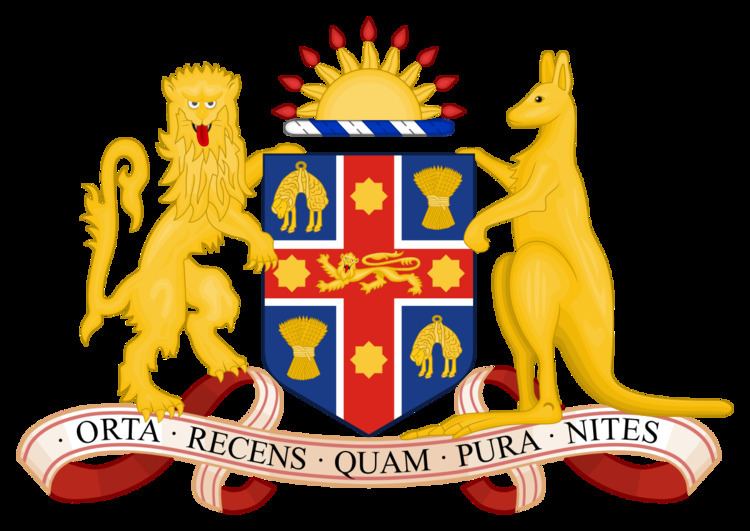Established 1858 | ||
 | ||
Location Full time sittings are held in the Sydney CBD, and at Parramatta, Penrith, Campbelltown, Newcastle, Gosford, Wollongong and Lismore. Part time sittings are held in a range of major regional centres. Composition method Vice-regal appointment upon nomination by the Premier following the advice of the Attorney General and Cabinet Authorized by Decisions are appealed to | ||
The District Court of New South Wales is the intermediate court in the judicial hierarchy of the Australian state of New South Wales. It is a trial court and has an appellate jurisdiction. In addition, the Judges of the Court preside over a range of tribunals. In its criminal jurisdiction, the Court may deal with all criminal offences except murder, treason and piracy.
Contents
Established in 1858 pursuant to the District Courts Act 1858 (NSW), the Court replaced the Courts of Requests and divided the Colony of New South Wales into districts with courts in each district. Reforms during 1973 via the District Court Act 1973 (NSW) created one District Court, with a statewide criminal and civil jurisdiction.
In its civil jurisdiction the Court may deal with all motor accident cases, irrespective of the amount claimed and other claims to a maximum amount of A$750,000, although it may deal with matters exceeding this amount if the parties consent. In addition, the Court may deal with equitable claims or demands for recovery of money or damages for amounts not exceeding A$750,000. The Court is also empowered to deal with applications under the De Facto Relationships Act 1984 (NSW), the Family Provisions Act 1982 (NSW) and the Testator Family Maintenance and Guardianship of Infants Act 1916 (NSW) that involve amounts, or property to the value of, not more than A$250,000.
The Chief Judge of the District Court, since 2014, is The Honourable Justice Derek Michael Price AM.
History
By 1850, the court system in New South Wales consisted of:
With the discovery of gold in 1851 the Colony’s population increased and became more dispersed. Litigation grew as the Colony prospered, and crime was not declining. The Supreme Court began to fall seriously into arrears, and this was not helped by the fact that it did not visit a lot of towns. Courts of Quarter Sessions were also few in number and had no civil jurisdiction. By the mid-1850s there were calls for a revision of the court system, to meet the growing needs of the Colony. As a result, the District Courts Act 1858 (NSW) (22 Vic No 18) was assented to on 12 November 1858. This Act established District Courts, as courts of records, to replace Courts of Requests and divided the Colony into Districts. It conferred upon the District Courts a civil jurisdiction. It also provided for the appointment of a District Court Judge as Chairman of any Court of Quarter Sessions or General Sessions, to be held within the limits of the District for which that Judge was appointed.
The purpose of the Act was briefly described as:
District Courts were established by the Legislature for the purpose of simplifying legal proceedings in the recovery of amounts under £200, and lessening the expenses of attending such proceedings, as well as to relieving the Supreme Court of some portion of the overwhelming civil business which the rapid progress of the colony had lately engendered. The Act providing for the institution of these Courts also extended the jurisdiction of Courts of General and Quarter Sessions of the Peace, and prepared the way for a great increase in their numbers, under the presidency of District Court Judges as Chairmen, whereby criminal proceedings have been much facilitated, especially in the more distant and outlying portions of the country…
The District Courts Act 1858 remained in force until 1973, although the jurisdiction of the Court was increased from time to time. The District Court Act 1973 (NSW) commenced on 1 July 1973. It abolished the District Courts and Courts of Quarter Sessions and established one District Court of New South Wales, with a statewide criminal and civil jurisdiction.
Criminal jurisdiction
The District Court deals with a wide range of criminal matters. The only charges that the District Court cannot deal with are murder or treason, which must be dealt with by the Supreme Court. The types of criminal matters dealt with by the District Court include:
Residual jurisdiction
Most of the work in residual jurisdiction is handled by the Workers Compensation Commission. However, some matters that are handled by the District Court include:
Appellate jurisdiction
The District Court has appellate jurisdiction for decisions made by the Local Court of New South Wales and the Children's Court of New South Wales, where a review of both sentencing and convictions may be heard before the Court. Appeals against District Court decisions are made to the Supreme Court, the Court of Appeal or the Court of Criminal Appeal.
